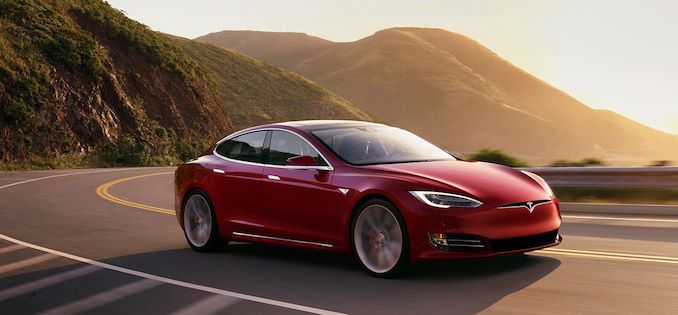Samsung & TSMC Develop 8nm & 7nm Automotive-Grade Nodes
by Anton Shilov on October 14, 2019 9:00 AM EST- Posted in
- Semiconductors
- Samsung
- TSMC
- 7nm
- Automotive
- 8nm
- 8LPP
- Samsung Foundry
- 8LPU
- N7
As vehicles are getting ‘smarter’ and gaining autopilot capabilities, it is easy to predict that the demand for higher-performing and more complex automotive SoCs will be growing rapidly in the coming years. To produce those SoCs, specialized manufacturing lines will be needed, which is why the two leading contract chip makers, Samsung and TSMC, are working on new nodes and IP aimed precisely at automobiles.
Samsung Foundry this past week said that in the near future it would introduce a version of its 8 nm process for automotive applications. At present, Samsung has two manufacturing processes that are defined as 8 nm: 8LPP and 8LPU, which are evolved from the company’s 10 nm node. It is likely that the automotive-grade 8 nm will be a further evolution of that technology. Right now, the most advanced nodes that Samsung uses to make chips for automobiles are its 28FDS and 14 nm technologies, so an 8 nm node will be a huge step forward.
Samsung did not disclose much about its automotive-grade 8 nm process, but the company did note that chips for cars have to comply with AEC-Q100 reliability standards, which mandates support for a -40°C to +105°C ambient operating temperature range, as well as a number of qualification reliability tests such as wear-out tests. Furthermore, to win designs with leading auto makers, these chips have to be made in facilities that have an IATF 16969-certified supply chain quality management system, which in short emphasizes defect prevention and variation reduction. Furthermore, any IP being fabbed, as well as development tools and the final devices themselves have to meet various ISO 26262 (aka ASIL) functional safety requirements, both individually and in context of a particular application.
Meanwhile, over in Taiwan, TSMC’s most advanced automotive-grade process technology today is 16FFC, which is current-generation as far as the automotive market is concerned, as it lags consumer SoC designers by two or three years. Looking towards the near future, TSMC has been developing an automotive-grade version of its N7 (1st Generation 7 nm) technology for quite a while, and expects it to be qualified by 2020. In fact, Synopsys has already developed essential automotive-grade IP for N7 (including DesignWare IP for LPDDR4X, MIPI CSI-2, MIPI D-PHY, and PCIe 4.0 IP), so chip designers are probably already working on new SoCs for vehicles to be made using TSMC’s leading-edge process.
Finally, while GlobalFoundries no longer develops leading-edge process technologies, it still has numerous nodes that can be used by the automotive industry for years to come, including 22FDX and 12LP. For now, these technologies are good enough for advanced SoCs, but it remains to be seen what the company offers to its clients from the auto industry.
Related Reading:
- Samsung Foundry Updates: 8LPU Added, EUVL on Track for HVM in 2019
- Samsung’s 8LPP Process Technology Qualified, Ready for Production
- Samsung’s Intros Exynos Auto V9 SoC: Octa-A76 Chip to Power Audi’s In-Vehicle Infotainment System
- GlobalFoundries and Synopsys Develop Automotive-Grade IP for 22FDX Process Tech
- Arm Unveils Arm Safety Ready Initiative, Cortex-A76AE Processor
- Imagination Launches PowerVR Automotive Initiative, 8XT-A GPU IP
- Bosch and NVIDIA Team Up for Xavier-Based Self-Driving Systems for Mass Market Cars













29 Comments
View All Comments
naris - Tuesday, October 15, 2019 - link
That is only in the USA, in the rest of the world there are far more Manuals than Automatics. Also many people, such as my self, wind up having to buy an automatic instead of a manual because the model we want is not available with a manual transmission, so they blows your whole "paying attention to what people are buying" argument since you can't buy what is not offered for sale.Byte - Tuesday, October 15, 2019 - link
I was all for old school muscle, had a '69 and '10 challenger. The maintenance on an EV is almost non existent. I have to look for something to do. Had Leaf for 4 years and only had to refill the winshield washer fluid. The Tesla i don't even have to tell you about. Even if the MCU crashes the car is perfectly drivable. I had it crash on me twice while parked, but could still drive. Can't really see much stats until it was booted back up, but only took about 20-30 seconds. Self driving i do not believe we are there yet, maybe 5 years. I don't use it, but I can see it being godsend for heavy traffic jams and long road trips with long stretches of boring highway.Dragonstongue - Tuesday, October 15, 2019 - link
I am sure auto makers CAN use very very small amount of chips / wires etc to make the vehicle and engine functional, NOT keep adding more and moreI am with you on this one, sometimes KISS method needs to apply, vehicles are one of these..should go hand in hand with also NOT making the lights laser burn your eyes from the socket bright on pretty much every damn vehicle on the road these days.
if above X "lumin" it should be auto nailed against the license...or at the very least, have a simple light sensor (buried somewhere cannot get damaged) that if it detects above X background bright will NOT allow the full "laser bright" lights to turn on....maybe they should go back to the NOT all-in-one headlamp assembly go back to where at least headlight and running are SEPARATE
naris - Tuesday, October 15, 2019 - link
No self driving cars for me thank you. I really like being able to go home and I really don't think any self driving car will make it to my house, especially in the winter. GPS systems all invariable insist on taking an unnavigable goat path to/from my house you you always have to ignore the GPS and self driving cars are not capable of doing that. GPS also takes you to the front of my house, which is about 100 ft down a cliff, and not the back where the garage is.There is also a very steep section of road you have to climb that requires AWD in the winter (I have tried with RWD & RWD cars and been defeated, also had an AWD Subaru Legacy get defeated once), not sure how self driving car will handle that either, especially when the car starts sliding backwards and tilting sideways while the wheels spin to go forward.
Duncan Macdonald - Monday, October 14, 2019 - link
What a pity that Boeing did not bother with that level of safety requirements in the MCAS system on the 737 Max 8.rrinker - Monday, October 14, 2019 - link
There's a big difference between the reliability level of the components fabricated using this process, and the software that is written to execute on it. The problem here was the latter, not the former. Also, there was a procedure in place to deal with this condition. A step was missed, to the detriment of all on board. Granted, such a condition should never have been allowed to occur in the first place, but this was not a failure of the hardware itself because of some lack of quality in the process node used to make the chips. Aircraft standards are even HIGHER than this.melgross - Monday, October 14, 2019 - link
It seems as though GF has reduced its possibility of being in business by disregarding more advanced nodes. I don’t know if there are any automotive chips being produced by them now, but these new advanced seem to cut off any possibility of them doing so in the near future.I remember when they announced that they would stick with advancing their current 14 and 12nm nodes, they said, or rather, the guy who controls them said, that it was time to start making a profit. But if they continue to fall further behind, they will have less business coming in.
Death666Angel - Monday, October 14, 2019 - link
Pretty sure most ICs in the world are on nodes other than the leading edge.melgross - Monday, October 14, 2019 - link
Sure, can you point out the ones on 65nm, or maybe 45nm? I’m sure there must be a few, other than some analog. In a few years, 16, 14 and 12 will seem like 65 and 45 today. Even 32 isn’t around that much.Will they get work? I suppose so. But big companies can afford to keep a depreciated plant around with older tech for clients that still need it. But to only have those plants isn’t good.
Ej24 - Monday, October 14, 2019 - link
Most of your ethernet controllers, wifi radios, asmedia USB controllers, bmc modules and other ICs on your typical pcb are 65nm or 45nm. For example the Intel I219 gigabit ethernet controller found in a ton of current mainstream motherboards is 40nm. The only component on the board that is on a bleeding edge node is the cpu itself. Even Intel's PCH (chipset) is often 22nm for now. Or an older version of their 14nm.